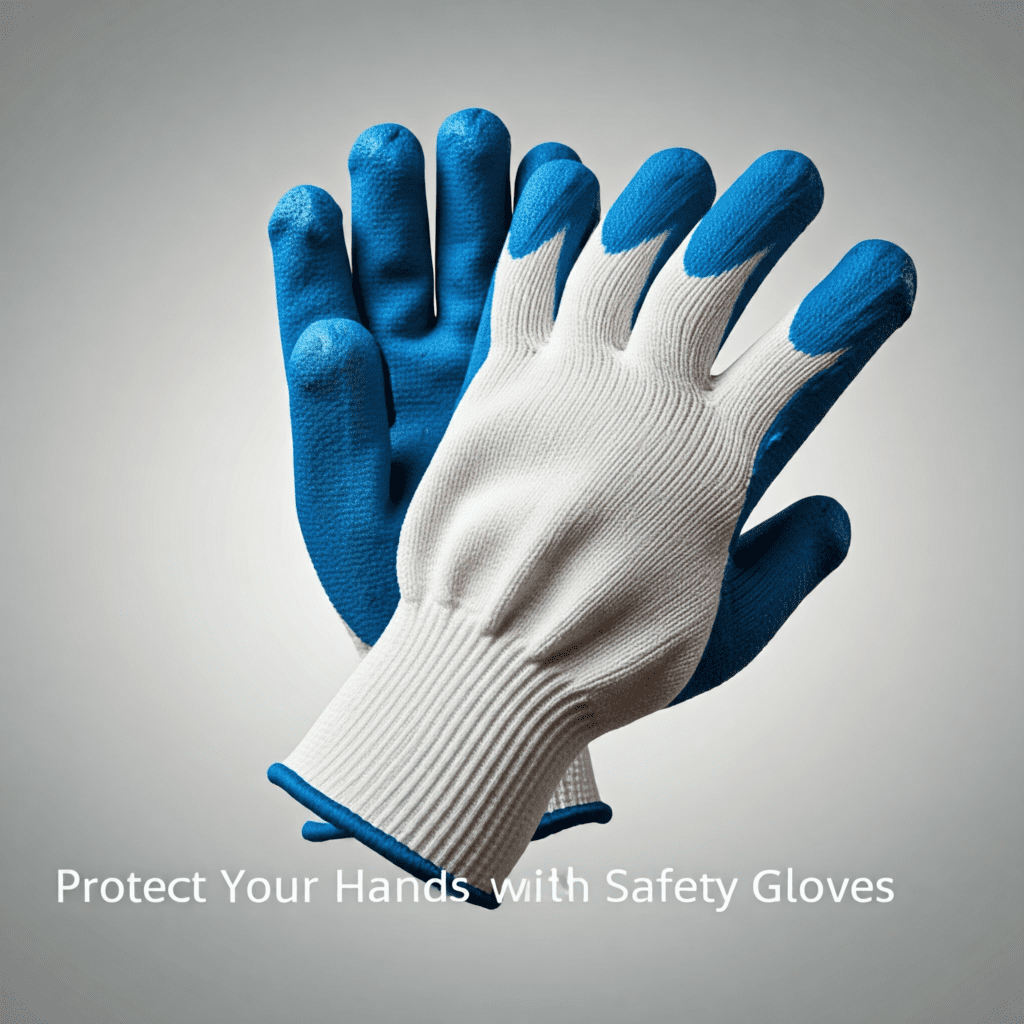
Protect Your Hands with Safety Gloves
Protect Your Hands with Safety Gloves: A Comprehensive Guide
Safety gloves are essential personal protective equipment (PPE) designed to safeguard your hands from various hazards. Whether you’re working in construction, handling chemicals, or performing intricate tasks, the right pair of gloves can prevent injuries and enhance your productivity. This comprehensive guide will explore the importance of safety gloves, the different types available, and how to choose the best ones for your specific needs.
The Importance of Safety Gloves
Safety gloves play a crucial role in protecting workers from numerous hazards. These hazards include cuts, abrasions, chemical burns, and extreme temperatures. Wearing the appropriate gloves can significantly reduce the risk of hand injuries, which are among the most common workplace injuries. Ensuring that employees have access to and consistently use the right gloves can lead to a safer and more productive work environment.
Types of Safety Gloves
Understanding the various types of safety gloves available will help you make an informed decision about which ones to use. Here are some of the most common types:
Cut-Resistant Gloves
Cut-resistant gloves are designed to protect hands from sharp objects and materials. They are often made from high-performance materials such as Kevlar, Dyneema, or stainless steel mesh. These gloves are ideal for industries like construction, glass handling, and metalworking, where the risk of cuts and lacerations is high.
Chemical-Resistant Gloves
Chemical-resistant gloves provide protection against harmful substances, including acids, solvents, and other chemicals. Materials like nitrile, neoprene, and PVC are commonly used to manufacture these gloves. Workers in laboratories, chemical plants, and cleaning services can benefit greatly from wearing chemical-resistant gloves to avoid skin irritation and chemical burns.
Thermal-Resistant Gloves
Thermal-resistant gloves are designed to protect hands from extreme temperatures, both hot and cold. These gloves are typically used in industries such as welding, foundries, and food processing. Materials like leather, aluminized fabric, and high-temperature textiles are used to create thermal-resistant gloves, ensuring workers’ hands remain safe from burns and frostbite.
Electrical-Resistant Gloves
Electrical-resistant gloves are essential for workers who handle electrical equipment or work in environments with a risk of electrical shock. These gloves are made from insulating rubber materials and are rated based on the level of voltage protection they offer. Electricians and utility workers rely on electrical-resistant gloves to prevent potentially fatal injuries.
Disposable Gloves
Disposable gloves are commonly used in medical, food handling, and laboratory settings. Made from latex, nitrile, or vinyl, these gloves provide a barrier against contaminants and pathogens. They are designed for single-use, ensuring hygiene and preventing cross-contamination.
Choosing the Right Safety Gloves
Selecting the right safety gloves involves considering several factors, including the type of hazards present, the level of protection required, and the glove material. Here are some key points to keep in mind:
Assess the Hazards
Identify the specific hazards in your workplace. Are you dealing with sharp objects, chemicals, extreme temperatures, or electrical equipment? Understanding the risks will help you choose gloves that provide adequate protection.
Determine the Level of Protection
Different tasks require different levels of protection. For example, light-duty tasks may only need basic protection, while high-risk tasks require gloves with advanced protective features. Consider the severity of potential injuries and choose gloves accordingly.
Consider Comfort and Fit
Comfort and fit are crucial for ensuring that workers wear gloves consistently. Ill-fitting gloves can cause discomfort and reduce dexterity, leading to decreased productivity and an increased risk of accidents. Look for gloves that fit well and provide good flexibility and grip.
Check Compliance Standards
Ensure that the gloves you choose comply with relevant safety standards and regulations. In the United States, the Occupational Safety and Health Administration (OSHA) and the American National Standards Institute (ANSI) provide guidelines for PPE, including safety gloves. Check for certifications and ratings that indicate the gloves meet these standards.
Maintaining and Inspecting Safety Gloves
Proper maintenance and regular inspection of safety gloves are essential to ensure their effectiveness. Follow these tips to keep your gloves in good condition:
Regular Cleaning
Depending on the material, safety gloves should be cleaned regularly to remove dirt, chemicals, and other contaminants. Follow the manufacturer’s instructions for cleaning and avoid using harsh chemicals that could damage the gloves.
Inspect for Damage
Before each use, inspect gloves for signs of wear and tear, such as holes, cuts, or abrasions. Damaged gloves should be replaced immediately, as they may not provide adequate protection.
Proper Storage
Store gloves in a cool, dry place away from direct sunlight and harsh chemicals. Proper storage helps extend the lifespan of the gloves and maintains their protective properties.
Conclusion
Safety gloves are a vital component of personal protective equipment, offering essential protection against various workplace hazards. By understanding the different types of safety gloves and how to choose the right ones, you can create a safer work environment and reduce the risk of hand injuries. Regular maintenance and inspection of gloves will ensure they remain effective and provide the protection you need. Invest in high-quality safety gloves and prioritize hand safety to enhance productivity and protect your workforce.

